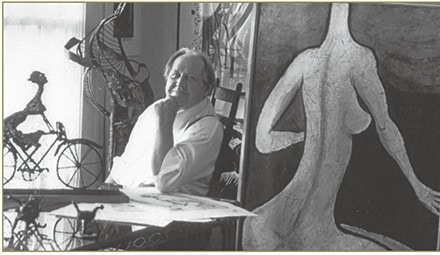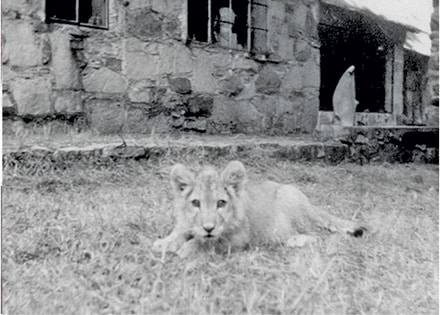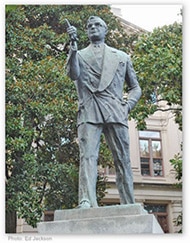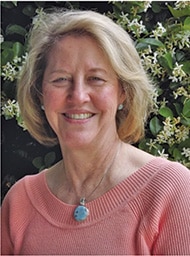
At an early age I discovered that I had neither the imagination nor skills to pursue art as my field of interest. However, being introduced to Steffen Thomas revealed to me what imagination and skill can do when applied to any medium.
Steffen must have been one of the most prolific artists in the world. He turned stone, clay, metal, glass, broken tiles, tar and paint into beauty, and occasionally highlighted his paintings with additional art in the frames he created.
Like a child with a new toy, Thomas was fascinated by every medium, and always wanted to show visitors his latest creation. His energy was unbounded, letting his creativity take him anywhere it wanted to go.
His subjects were as varied as his media, and there was a story behind each piece he created. Themes that frequently appear in his art are mother and child, women in large colorful hats, and philosophy, but there was no limit to the range of subjects. He was always seeking the truth and ways to express his vision of the true “brotherhood of man”– another theme reflected in much of his work. Not only did he create the pieces of art but also created the tools he needed for his creations. A friend told me that Thomas would go to a junkyard and negotiate over pieces of scrap he needed to construct a kiln, a casting foundry or other equipment. He was not only an artist but also a skilled tradesman.
Peasant Queen
Peasant Queen
Nothing was trivial to Steffen Thomas. If it appeared trivial he enlarged it. Once when I was arriving to attend his birthday party, I found Steffen out-side the house greeting another guest that had arrived just before me. Steffen introduced me as “a big executive with General Motors”. In fact, I was a low level Industrial Engineer at a local GM auto-mobile assembly facility. He didn’t exaggerate. He just made life more interesting than it appeared.
Steffen Thomas was born in 1906 in Fürth, Germany. His father, a brush manufacturer, apprenticed him to a stonecutter at the age of 14 after realizing his son wanted to be a sculptor. Steffen applied himself and became an excellent stone carver, spending part of his time working on WWI monuments. He was so gifted that at the age of 17 he was accepted to the School of Applied Arts in Nuremberg and at the age of 19 entered the Academy of Fine Arts in Munich. While at the Academy he established himself as a sculptor of note, was given a studio of his own and awarded “Master” status at the age of 21.
Thomas derived some of his principles from his formal art training in Germany and continued developing and adding to them through his study of philosophy, history, literature, arts, politics, and current cultural movements. He was classically trained at the Academy of Fine Arts in Munich. He greatly admired the woodcarvings of Tilman Riemenschneider and sculpture by Michelangelo and ultimately adopted several core principles from these artists. Thomas felt that all great art must have beauty and be lasting. He felt there was beauty in everything and good in all people. In addition, he thought, “Symbolism is all man knows.” He held that in all art there should be a distinctive profile or silhouette. He distinguished art from craft by saying, “Art must have philosophy.”
His principles:
• Art must have beauty
• Art must be lasting
• Clumsy forms have no place in art
• There is beauty in everything
• There is good in everyone
• Symbolism is all man knows, and art is symbolism
• No profile, no art
• No philosophy, no art
Thomas was infatuated with the American Dream, and at the age of 22 paid his own way to America. His mentor at the monument company where he had apprenticed as a young man arranged for him to have a sponsor in Florida. The sponsor was a sculptor and was able to find him a job in Palm Beach making copies of classical sculptures for the E.F. Hutton – Marjorie Meriwether Post Estate (now Donald Trump’s Mar-a-Lago Club). He worked on the Estate until he started to add his own embellishments that caused him to be fired on the spot. After a brief trip to Germany he returned to America where he lived, for a short time, in Alabama but settled in Atlanta by 1930. The “Young Bavarian Sculptor” soon became well known and was commissioned to sculpt busts of Southern dignitaries, such as Alabama Governor Bibb Graves and Dr. George Denny, President of the University of Alabama. By 1931 he renovated an outbuilding for a studio behind the Studio Arts Assembly at the corner of Peachtree and 14 St., where he continued to work for 10 years.
In 1931 Thomas made a large sculpture called Rhythm that was placed in the Lobby of the Fox Theater when it was new. It was soon removed because the ladies of Atlanta didn’t think she was properly clothed. Rhythm was a portrait of Yvonne Georgi, a German dancer who was touring America in the 1930s with Harald Kreutzberg, another German dancer. When the tour came to Atlanta, Thomas asked Georgi to pose for the sculpture. The Steffen Thomas Museum has a small bronze version of this piece, but no one seems to know what happened to the large one, that was last seen in 1962 at the Fox in a storage room. In the early 1930’s in Atlanta, Thomas was often interviewed by the local press. A “girl reporter” named Margaret “Peggy” Mitchell interviewed him and became a friend. She even served as a hostess for some of his studio parties. She also told him she was writing a book about the South. Being somewhat secretive about her writing she eventually had to be convinced to turn it over to a publisher.

The family included a lion cub outside the Stone Mountain family home he built in the 1940’s.
In 1941 Thomas bought 50 acres in Stone Mountain, Georgia, where he and his wife raised their four children in a home he built himself, stone by stone, and where he worked in his studio that included a bronze-casting foundry that he also built himself. At Stone Mountain the family included a lion cub that had been rescued and lived with them until it became too big to have as a house pet.
Thomas created some of his greatest public sculptures in the Stone Mountain studio, including the colossal size statue of Governor Eugene Talmadge, on the grounds of the Georgia State Capitol in Atlanta, the Alabama Memorial, located in the Vicksburg National Military Park in Mississippi and Reclining Mother and Child sculpture in front of the Roswell Library.
Thomas wanted to portray Eugene Talmadge in shirt sleeves with his thumbs hooked in his suspenders (a typical pose for Talmadge) but the Talmadge family thought it was too un-dignified looking. Steffen “accidentally” put six fingers on the right hand of the statue. When pointed out to him, he said people should not try to tell artists how to make their art.

By the mid-1955s Thomas had begun creating primarily Expressionist art, though he had wanted for years to secure the commission for a monument on Stone Mountain. In the late 1950s he submitted an idea for the completion of the Confederate Memorial on the side of Stone Mountain, but the Committee ultimately hired a Vermont sculptor to finish off the remnants of Augustus Lukeman’s sculpture that was left from an earlier time. Thomas had submitted a traditional idea of Lee with his soldiers but had another idea he liked better. He knew the Committee would not go for his favorite, The New South (also called The Man Child), which depicted a mother holding a child with the head of an adult. Thomas said the mother represented the Union who was nurturing her child, the New South.
After he failed to receive the commission for the Stone Mountain monument, Thomas made his own Monument to the Brotherhood of Man. It was on the wall of this Monument that he placed his motto, “This World is Too Small for Less than Brotherhood – Too Dangerous for Less than Truth.” He also put this motto on his funeral urn that he made about 15 years before he died. His ashes are in this urn that is on display in the Steffen Thomas Museum.
Thomas moved with his wife back to midtown Atlanta in 1973, where he worked at his studio home until his death in 1990. Visiting his home in midtown was very much like visiting a museum with art objects occupying walls and floors.
A few years after his death, Thomas’s widow, with the help of family, collectors and friends, established the Steffen Thomas Museum of Art on property owned by his son, Steffen, Jr., in rural Buckhead, GA near Madison, having found it impossible to build a museum on the site of the last studio in Atlanta. Sara Thomas’s dream to see a museum dedicated to her husband’s life and work was realized in 1997.
Steffen Thomas Museum of Art
4200 Bethany Road
(Southeast of Madison)
Buckhead, Georgia 30625
Hours: Monday – Saturday, 1
1:00 AM – 4:00 PM,
or by appointment
For information or to schedule a docent guided tour,
Call 706-342-7557 or visit the website: www.steffenthomas.org
The Steffen Thomas Museum of Art, in Buckhead, GA, is the only fine art museum dedicated to the life and work of a single artist in Northeast Georgia – focusing the majority of its program-ming on arts education and community outreach. The Museum is located in a rural county and serves a hybrid population of lifelong residents who work the land, in-town residents who have been here for generations, and newcomers from all walks of life and demographics. Through its work with school children and families in Greene, Putnam, Morgan, Walton, Newton & adjacent counties, the museum strives to be a source of inspiration to all, encouraging creative thought, family activities, artistic endeavor, and facilitating cultural opportunities for the community at large.
The Children of Steffen Thomas
Steffen W. Thomas, Jr. (1934-2013) was the father of two children. He trained as an electronic technician and became SE Regional Service Manager for Teleeautograph Corp, a company that manufactured an analog precursor to the modern fax machine. After leaving this job, he became an independent building contractor and developer, as well as starting RMS of GA, a company that developed refrigerants to replace Freon. In his later years he was a gentleman farmer raising cattle on his Morgan County farm. Steffen’s widow, Betty Thomas, lives in Madison, GA.
Robin Thomas Burnett is a retired teacher and mother of two children. She is currently a Partner of Steffen Thomas Art Representatives, LP and lives with her husband Charles in Doraville.
Conway Douglass Thomas is the father of four children and is the former owner of Graphics Atlanta, a company that manufactures and markets color separation plates. He is currently a General Partner of Steffen Thomas Art Representatives, LP and lives in Monticello, GA.
Lisa Thomas Conner is the mother of three children, including two step-sons. She was a potter and art teacher in Grayson, GA for many years, and served on the Board of the Gwinnett Council for the Arts. Later she served as Museum Director and Arts Outreach Coordinator for the Steffen Thomas Museum of Art. She is currently the Managing General Partner of Steffen Thomas Art Representatives, LP and lives near the Museum in Buckhead, GA, with her husband Dr. Chuck Conner, a retired Gwinnett County psychiatrist.
Pictured: Lisa Conner (Steffen Thomas’s daughter)
(Information for this article was supplied by Lisa Conner (Steffen Thomas’s daughter), the Steffen Thomas Museum of Art and excerpts from Steffen Thomas Rediscovered, Edited by Andrew E. and Hathia A. Hayes.)



